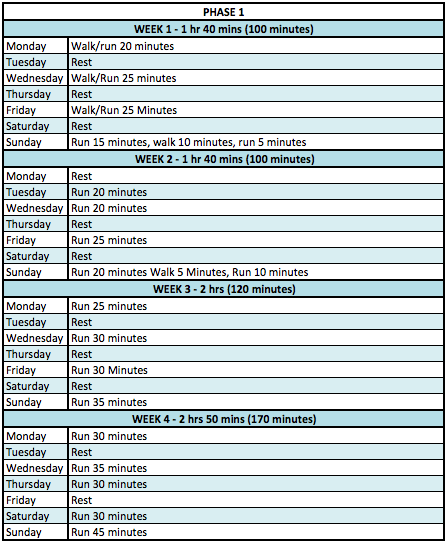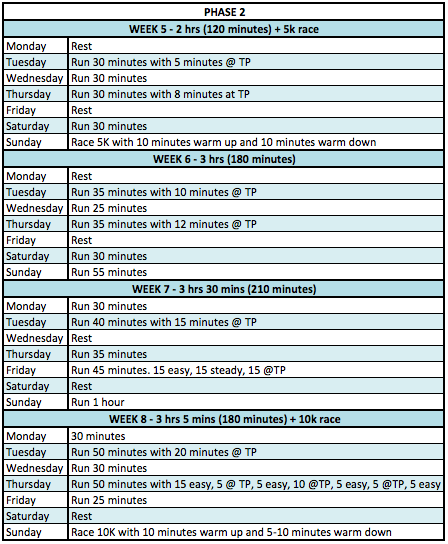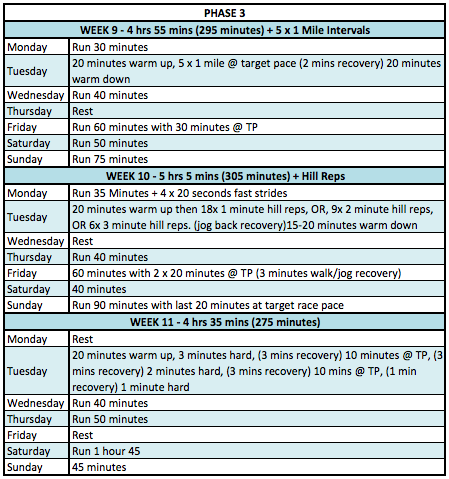
Andy Vernon; GB Olympic athlete and European Athletics Championship medallist has written us a 12 week Half Marathon plan. The plan is split into 4 phases, and is aimed at all abilities, including those who haven’t done much running previously.
Whilst following this training program it is important to understand a few rules to get the most out of the training you put in.
- Any day that is just listed as a run for x amount of time is simply a very easy and light run. You should be able to hold a good conversation while doing your easy run and you should always be able to run a bit further if you had to. This type of run is often referred to as ‘junk mileage’ but when training, no mile is a junk mile. Every mile you run serves a purpose and will help you improve endurance and strength while also helping you recover for the next hard day.
- The warm ups and warm downs should be treated exactly like the steady easy running days. They are simply to get the body moving and warmed up prior to starting something faster.
- There should be a considerable change in pace between your warm ups/downs, recoveries and easy running and anything faster. If you can’t pick the pace up for a threshold run or a session rep then you are doing the easy running too fast. It is extremely important that you have a change in pace when required. A one-minute rep should be faster than a five-minute rep. If you start doing everything at the same pace, you will find it very hard to get faster.
- Anything listed as @ TP means at threshold pace. This is the training designed to increase your aerobic capacity and improve your lactic curve. Anything with this should be done at 80-85% of you maximal effort; you should be able to talk in 3-4 words at a time. If in doubt it’s always better to go slightly slower than too fast but make sure it is faster than your easy running.
- Remember that this is a guide and not gospel. If you need to change days around, take an extra day off or two due to tiredness, fatigue or injury than do so. If you need to shorten a run or would like to lengthen a run as you go a long then please do but don’t stray too far from the program if you don’t have to. It has been put together to steadily increase mileage and intensity in a structured way.
- Good luck in achieving your goals and enjoy getting fit.
Phase 1 - Introduction to running

Phase 2 - Building Aerobic Capacity

What is aerobic threshold? I hear you ask. Well I’ll tell you. Aerobic threshold (sometimes called lactic threshold or tempo running) is a given pace or effort that one can exercise at (in our case run) where the body is at its limit (or threshold) before the onset of lactic acid occurs. Typically this is around 80%-85% of your maximal heart rate and is completely individual as every ones physiology is different. There is a fine line between running at your aerobic threshold and being slightly over. If you’re unsure it’s always better to play it safe and run a bit slower than go too fast and blow up. It’s actually very important that you don’t go too fast as this is a very specific type of training with an outcome that will only work if its done correctly. The idea of it is to increase the bodies’ capacity to working at this effort in order to run further distances, at faster speeds but still staying under that magic threshold effort where you don’t build up the dreaded lactic acid. This will ultimately be just faster than the pace you should try to run your marathon at.
Phase 3 - Half Marathon Training

Phase 4 - Taper

